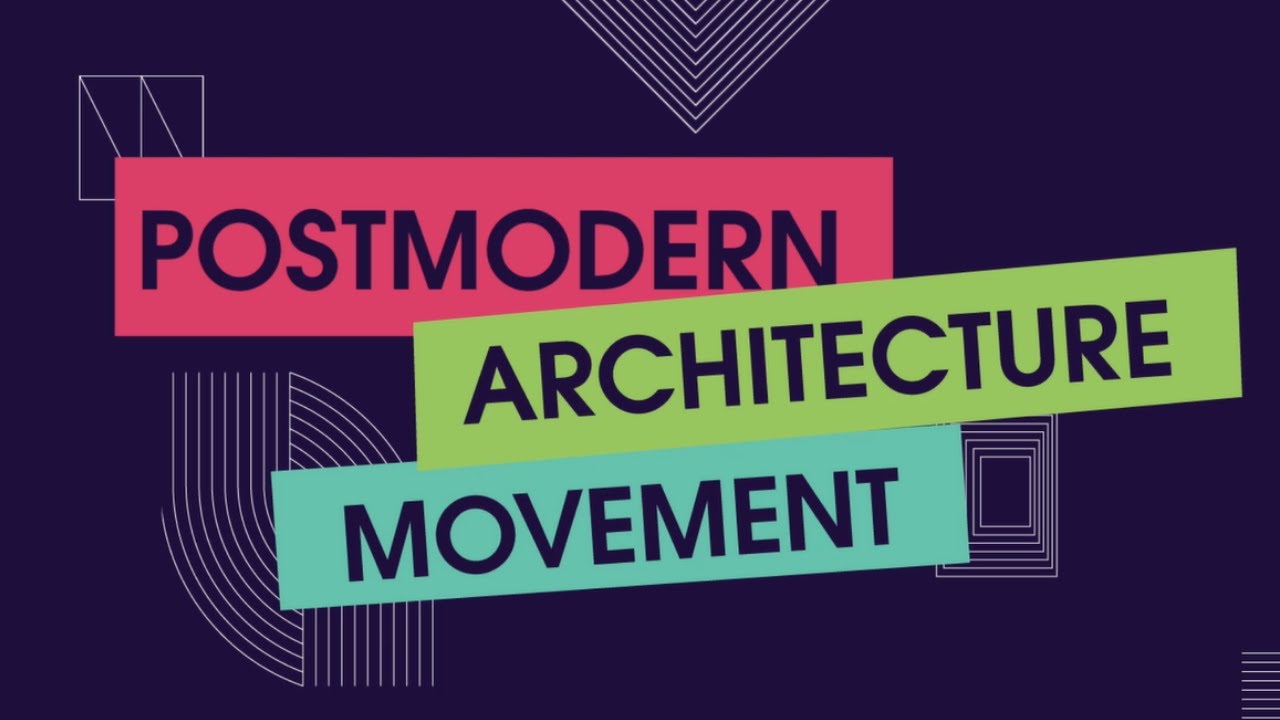Analyzing The History And Development Of Postmodern Architecture - Understanding The Evolution Of Architecture
Analyzing the history and development of postmodern architecture was characterized by a focus on function, minimalism, and the use of new technologies, resulting in a break from traditional design principles.
Author:George EvansMar 15, 2023142.7K Shares2.1M Views

Postmodern architectureemerged as a response to the modernist movement in architecture, which had dominated architectural discourse in the mid-twentieth century.
Analyzing the history and development of postmodern architecturewas characterized by a focus on function, minimalism, and the use of new technologies, resulting in a break from traditional design principles.
Postmodernism, on the other hand, sought to reintroduce historic references, ornamentation, and a sense of place in architectural design.
This article will analyze the history and development of postmodern architecture, exploring its origins, key features, and impact on contemporary architecture.
Analyzing The History And Development Of Postmodern Architecture
Postmodern architecture is an architectural style that emerged in the late 1960s and early 1970s as a response to the perceived failures of modernist architecture.
While modernist architects emphasized the importance of function and simplicity in building design, postmodern architects argued that architecture should also consider history, culture, and context.
Historical Context
Postmodern architecture emerged in the wake of the urban renewal movement of the 1950s and 1960s, which often involved the demolition of historic buildings and neighborhoods. Many architects and critics saw modernist architecture as complicit in this destruction of cultural heritage.
As a result, postmodern architects sought to create buildings that were more responsive to their cultural and environmental contexts, and that incorporated historical references and ornamentation.
Key Architects
Some of the key architects associated with postmodernism include Michael Graves, Charles Jencks, and Robert Venturi.
Michael Graves is perhaps best known for his designs for domestic products and household items, but he also designed several significant buildings, including the Portland Building in Oregon and the Humana Building in Kentucky.
Charles Jencks was a theorist and critic who helped to popularize postmodernism through his writing and criticism. Robert Venturi was a leading figure in the development of postmodern architecture, and his book "Complexity and Contradiction in Architecture" is considered a seminal work in the field.
Design Principles
Postmodern architecture is characterized by several design principles that distinguish it from modernist architecture. One of the most significant is the use of historic references and ornamentation.
Postmodern architects sought to incorporate historical styles and motifs into their designs, often ironically or playfully. Another key principle of postmodern architecture is a focus on symbolism and meaning.
Postmodern architects believed that buildings should express cultural and social values and that architectural design should be used as a form of cultural critique.
Origins Of Postmodern Architecture
Postmodern architecture emerged in the late 1960s and early 1970s as a response to the perceived failures of modernist architecture.
Modernism had promised to create a better world through rational design, but it had also produced sterile, impersonal buildings that lacked a sense of place and cultural identity.
Postmodern architects rejected the idea that form should follow function, and instead emphasized the importance of history, culture, and context in architectural design.
One of the key figures in the development of postmodern architecture was Robert Venturi, whose 1966 book Complexity and Contradiction in Architecture argued for a more nuanced approach to architectural design.
Venturi called for architects to embrace the complexity of the built environment, rather than simplifying it into a set of functionalist principles. He also championed the use of historic references and ornamentation in architecture, arguing that they could add richness and depth to the built environment.
Another important influence on postmodern architecture was the work of the Italian architect Aldo Rossi.
Rossi was interested in the relationship between architecture and memory, and he believed that architecture should reflect the cultural history of a place. His designs often incorporated historic references, such as classical columns or medieval towers, to create a sense of continuity with the past.
Key Features Of Postmodern Architecture
Postmodern architecture is characterized by a rejection of the modernist idea that form should follow function. Instead, postmodern architects emphasized the importance of context, culture, and history in architectural design.
Key features of postmodern architecture include the use of historic references, the incorporation of ornamentation, and a focus on symbolism and meaning.
Historic References
One of the most distinctive features of postmodern architecture is the use of historic references. Postmodern architects sought to break with the modernist tradition of rejecting the past, and instead embraced history as a source of inspiration for architectural design.
Historic references in postmodern architecture can take many forms, including classical columns, Gothic arches, or Art Deco motifs.
The use of historic references in postmodern architecture is not simply an exercise of nostalgia. Rather, postmodern architects use historic references to create a sense of continuity with the past and to engage with the cultural history of a place.
By incorporating historic references into their designs, postmodern architects seek to create buildings that are both functional and meaningful.
Ornamentation
Another key feature of postmodern architecture is the use of ornamentation. Modernist architects had rejected ornamentation as unnecessary and frivolous and had focused instead on simple, minimalist designs.
Postmodern architects, on the other hand, saw ornamentation as a way to add richness and depth to architectural design.
Ornamentation in postmodern architecture can take many forms, from decorative moldings to intricate metalwork. Postmodern architects often use ornamentation to create a sense of playfulness and whimsy in their designs and to engage with the surrounding environment.
Symbolism And Meaning
Postmodern architects also emphasized the importance of symbolism and meaning in architectural design. They believed that buildings should not simply be functional structures, but should also have cultural and symbolic significance.
Postmodern architects often used symbolism and meaning to create buildings that were expressive and engaging, and that reflected the values and aspirations of the communities they served.
Symbolism and meaning in postmodern architecture can take many forms. For example, a building might be designed to evoke the shape of a flower, symbolizing growth and renewal. Alternatively, a building might incorporate a cultural reference, such as a mural or sculpture, to express a sense of local identity and community pride.

Postmodern Architecture - Why did this movement take place?
Impact On Contemporary Architecture
Postmodern architecture had a profound impact on contemporary architecture, both in terms of design principles and broader cultural trends. Postmodernism challenged the dominant modernist paradigm in architecture and paved the way for a more diverse and eclectic approach to architectural design.
One of the key legacies of postmodern architecture is its emphasis on context and history. Postmodern architects showed that buildings could be both functional and culturally significant and that architectural design should take into account the unique characteristics of a place and its people.
This legacy continues to influence contemporary architecture, as architects seek to create buildings that are more responsive to their cultural and environmental contexts.
Another legacy of postmodern architecture is its focus on symbolism and meaning. Postmodern architects demonstrated that buildings could be powerful symbols of cultural identity and community values and that architectural design could play a meaningful role in shaping the cultural landscape.
This legacy continues to inspire contemporary architects, who seek to create buildings that are not only functional but also culturally significant and expressive.
People Also Ask
What Was The Significance Of The Portland Building In The History Of Postmodern Architecture?
The Portland Building, designed by Michael Graves in 1982, is considered a seminal example of postmodern architecture and helped to establish the style as a major force in architectural design.
How Did Postmodern Architecture Challenge The Dominant Modernist Paradigm?
Postmodern architecture challenged the idea that form should follow function, and instead emphasized the importance of history, culture, and context in architectural design.
What Is The Legacy Of Postmodern Architecture?
The legacy of postmodern architecture includes a renewed emphasis on context and history in architectural design, as well as a focus on the symbolism and meaning in building design.
How Has Postmodern Architecture Influenced Contemporary Architecture?
Postmodern architecture has influenced contemporary architecture by encouraging architects to create buildings that are more responsive to their cultural and environmental contexts, and by emphasizing the importance of symbolism and meaning in architectural design.
What Are Some Examples Of Postmodern Architecture?
Examples of postmodern architecture include the Piazza d'Italia in New Orleans, the AT&T Building in New York City, and the Walt Disney Concert Hall in Los Angeles.
Conclusion
Analyzing the history and development of postmodern architecture is pretty much necessary in the current era.
Postmodern architects rejected the idea that form should follow function, and instead emphasized the importance of history, culture, and context in architectural design. Key features of postmodern architecture include the use of historic references, ornamentation, and a focus on symbolism and meaning.
Postmodern architecture has had a profound impact on contemporary architecture, both in terms of design principles and broader cultural trends. Its legacy continues to inspire architects to create buildings that are not only functional but also culturally significant and expressive.

George Evans
Author
George Anderson, an exceptional architectural designer, envisions and brings to life structures that transcend the realm of imagination. With an unwavering passion for design and an innate eye for detail, George seamlessly blends form and function, creating immersive spaces that inspire awe.
Driven by a deep appreciation for the interplay of space, light, and materials, George's innovative approach redefines the possibilities of architectural design. His visionary compositions leave an indelible mark, evoking a sense of wonder and transforming the built environment.
George Anderson's transformative designs and unwavering dedication continue to shape the architectural landscape, pushing the boundaries of what is possible and inspiring generations to come.
Latest Articles
Popular Articles
